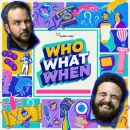
Under the Blue Umbrella
Kicking off our "Summer of Nostalgia" is this series, produced in 1977, by South Carolina ETV and the SC State Department of Education.
The series may jog your memory and take you back to a time you'll remember fondly, when large, boxy TV sets were rolled into classrooms on a large cart with a big TV on top!
This series of 16 programs will be presented in four installments with four programs featured each week!
101 - Yes, I Can (1977)
This program explores family life. Tommy wakes up thinking about who he can play with, since it’s Saturday. The family sets the table for breakfast and starts eating. Tommy asks if he can play with his big brother because he can’t think of anything he can do. Their dad mentions that he needs to wash the windows and that they can help. Their mom remembers that the dog needs a bath and suggests that. Tommy goes with the older boys to the basketball court because he really wants to play with them. His brother, Keith, tells him he is too small to play and sends him away. Tommy asks a group of boys his own age if he can play kickball with them and they do. Tommy goes home and his dad is washing the windows. Tommy’s mom reminds him about bathing the dog. It's important to remember that everyone can make contributions in their own way, according to their abilities.
102 - Alike But Different (1977)
In this program, the first segment explores the life of a young boy who lost his eyesight when he was young and is now blind. Because he is blind, he used special books, papers, and a special typewriter to help him learn both English and arithmetic. Although he is blind, this does not stop him from doing some of the things that others around his age do, even though they can see. Sometimes, he does need assistance from a teacher or a friend, but there are plenty of other things he can do independently.
The second segment explores the life of a young girl who is hard-of-hearing. Because of this, she needs to wear a hearing aid, so that she can hear better. Some kids in her class can hear things better than she, while others have a more difficult time. Some of them wear special headphones that make the teacher’s voice louder, so that they can hear her more clearly. Those who cannot hear well often sound different than others when they speak. This is because the way they hear the words is also how they pronounce them.
The third segment explores a pair of young girls who cannot walk, so they use wheelchairs. The two met while they were both in the hospital. Despite her inability to walk, one of the girls, Julie, can ride a horse. At school, one girl uses a special desk because her wheelchair is too big, while the other girl uses a lap-desk that can fit onto her wheelchair. To get to school, they ride a bus that has a retractable ramp, which allows them to get onto the bus without having to get out of their wheelchair.
103 - Family Portraits (1977)
In this program, we explore families of different sizes and those who have different relationships to each other. In our first family, a brother and sister live with their father and mother. Their mom is a teacher and their dad sells houses. The family shops together and plans to have a cookout later. All the family members help with activities around the house. They prepare the meals together and clean up together afterwards. They also play golf together after the work is done.
Next, we meet Susan and her family. She and her brother stay at a friend’s house after school. Susan’s father is in the Army and he comes to pick them up after work. Susan and Billy’s parents are divorced, and she lives in another city. Susan and Billy help their dad as much as they can. They go shopping for groceries together and they all help with various items they need. Susan and Billy’s father takes care of the roles that both a mother and a father typically do.<
Next, we meet Chris’ family. Chris lives with his grandparents. His parents are missionaries and live in Africa. They wanted Chris to stay in the United States to attend school. Chris’ grandfather works in their garden and Chris’ grandmother makes sure Chris has clothes to wear, a place to live, and food to eat.
Next, we meet Connie and her family. Connie lives in a children’s home. They play together, sleep together and eat together. They relate to each other as though they are family members.
How is your family like these families and how is it different?
104 - Beat the Buzzer (1977)
This program is about a gameshow called Beat the Buzzer, in which 4 kids compete for various prizes. The game works with the moderator asking questions until the buzzer goes off and the objective is to beat the buzzer. The questions are formatted in pictures, short answer response, one-word answers, and live demonstration. The first set of questions involves the topic of shelter, and the second set involves uniforms.
We hope you'll enjoy seeing these programs again and remembering your early experiences with South Carolina ETV!






